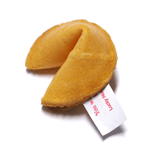| Anatomy of a Simple Play
What do I do with this roll? Is this my play or is there another? How do I determine which one is better?
Did you ever notice how often these questions pop up when you’re not sure? Relax! There is no wrong play to worry about. It’s only the logic behind the play that’s in error.
A play is the offspring of whatever mental process conceived it. What happens to this action when guesswork replaces reason? In this cerebral baby, the play is the flesh and the rationale its skeleton. Without some framework, it becomes a formless mass of skin that can slide into the dark crevices of superstition or be regimented into that unconscious morass called the “automatic play.” Structure, however uncertain, has to be there to give the play its form.
There are two kinds of plays in backgammon: cube and checker plays. Both require more than just dice rolls to determine the correct action. Cube decisions use equity as their guide -- the 25% rule in money play and probability for matches. You are a trader in this equity marketplace. Whether you cube or recube or take or drop depends on the best available deal at the time. The next question is, “How much of a bargain-hunter are you?”
Checker moves are driven by three fundamental concerns:
•FLEXIBILITY -- the dice rolls;
• TIMING -- the positional speed of the game; and
• VULNERABILITY -- the danger inherent to making a particular play.
To maintain a reasonable control over all these factors, you must make adjustments when the balance swings off center. Mistakes are commonplace in this trial and error study. Yet something can be learned from these mistakes. Correcting them often creates more insight than a brilliantly conceived notion.
 Fortune Cookie Fortune Cookie
Start to worry when you see an apparent truth, for it may blind you with its brilliance.
|
|

